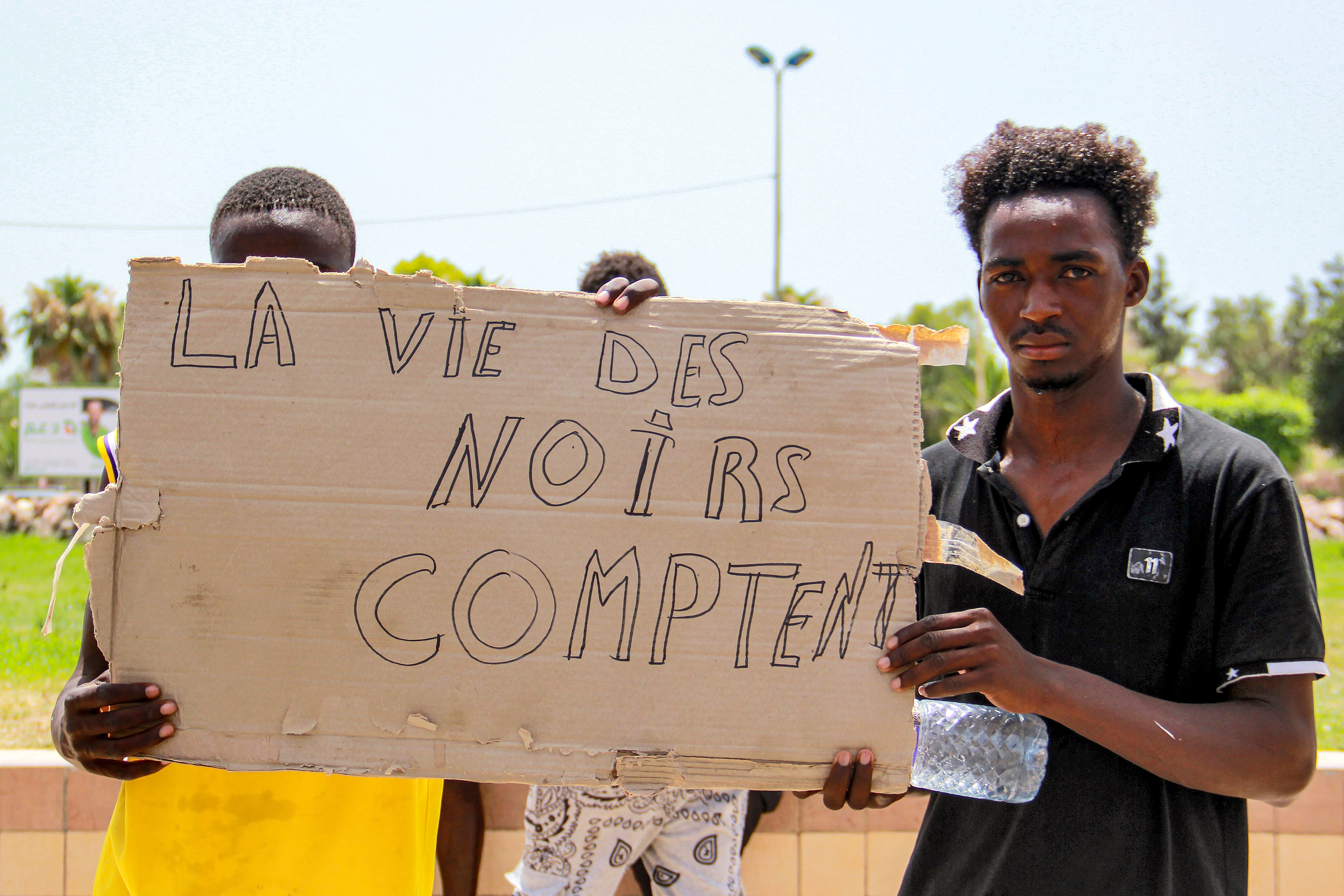
Al Amra, Tunisia – As European leaders met in Italy at the weekend to discuss the “migration crisis” on Lampedusa and how to limit arrivals, Tunisian police rounded up thousands of Black people from Sfax and bussed them to one of the principal departure points where desperate refugees start their Mediterranean crossings, hoping to land on the Italian island.
European Commission President Ursula von der Leyen was invited to Lampedusa on Sunday by far-right Italian Prime Minister Giorgia Meloni, who wanted to show how the arrivals were impacting the island. The two announced a 10-point plan intended to salvage their increasingly controversial “pact on migration” signed with Tunisia in July.
Among the measures is increasing the agencies involved in limiting irregular migration to Europe and strengthening support for Tunisia to play the same role on the other side of the Mediterranean.
While work refitting part of Tunisia’s naval fleet is already under way, promised payments of 105 million euros ($112m) for border security and 100 million euros ($107m) earmarked for propping up Tunisia’s economy have yet to be made.
Dragnet
Sfax, Tunisia’s second largest city, has emerged as a hub for refugees making their way to Europe. Individuals and families from across Southern Africa undertake perilous journeys to enter Tunisia through Algeria and Libya and reach the city so they can secure passage on a flimsy steel boat to Europe.

Without the correct documentation needed to rent a house legally in Sfax, many have been sleeping in the parks and gardens surrounding its old medina district, leading to heightened tensions with locals.
Over the weekend, a massive police operation was undertaken. Witnesses said officers were drafted in from across much of the country.
According to onlookers, the medina was cordoned off, and undocumented Black people – said by some to number in their thousands – were rounded up and put on buses before being driven out of Sfax to unknown locations.
While many of those locations could not be verified, Al Amra, a principal departure point for sub-Saharan refugees seeking passage to Europe, appeared to have received many.
That Al Amra is a significant departure point is widely acknowledged both within the town and among the network of drivers and lookouts who support the trade. Driving down the main street, the number of Black refugees in cafes or buying goods from local shops is only slightly less than the townspeople themselves.
In Sfax, police remain deployed in significant numbers with their vehicles stationed at regular intervals along the roads surrounding the city.
But in Al Amra, no police presence was visible beyond a small local force within the town. Moreover, the tracks that lead from the main road to the sea stood unguarded, local driver and middleman Ahmed* said.
‘Dirty’
None of the people Al Jazeera spoke with in Al Amra had received any explanation for their expulsions from Sfax, other than one person recalling a police officer telling him that the city centre was “dirty”.
Likewise, none had been provided with food, water or any access to shelter in the isolated village and its environs.
Adam, a refugee from the conflict in Sudan, said he was not told of a reason for his expulsion from Sfax or his relatively good fortune in being relocated to an area known as a hub for people smuggling.
“Nobody knows,” he said of the move to the town of 31,000 people. “If you didn’t get on the bus, they would beat you.”
“There are around 2,000 of us,” he said, a figure far in excess of initial estimates provided by a local NGO.
Al Jazeera reached out to the Tunisian ministries of interior and foreign affairs for comment but none was received by publication time.
In recent years, Tunisia has gained increasing prominence in debates over migrants and refugees because of its location as a departure point.
Meloni made halting all undocumented entries into Italy a campaign promise. Despite that pledge and July’s pact on migration with Tunisia, arrivals continue to rise.
Ignoring human rights
The deal has come in for criticism from both the European Union’s foreign affairs chief, Josep Borrell, and its ombudsman’s office, which expressed concerns over the lack of consideration of the rights of those impacted.
The relationship between Tunisia and the EU has deteriorated since, as demonstrated when the North African country barred four members of the European Parliament from entering its territory two days after the legislature debated the migration pact.
The European Parliament condemned the move.
Tunisian President Kais Saied has drawn criticism from within Europe. Facing an economic crisis, he has made scapegoats of both his political opponents and the country’s Black community.
Since Saied dismissed the prime minister and shuttered parliament in moves his opponents decried as a coup, the Tunisian economy has continued to drift towards bankruptcy, heightening the need for international aid.
Nevertheless, the president has maintained his populist course, imprisoning political opponents and characterising Black refugees and migrants as part of a conspiracy to change Tunisia’s demographics.
Those comments this year sparked an explosion of violence across Tunisia, compelling several foreign governments to evacuate their citizens.
While those tensions have eased somewhat since, they remained in Sfax, surging in July after a local man was stabbed during an altercation with Black refugees.
At that time, NGOs accused the Tunisian government of expelling more than 1,000 Black people to the desert at its borders with Algeria and Libya.
What Europe’s reaction may be to discovering that so many have been similarly expelled to one of the country’s principal departure points on the Mediterranean remains to be seen.







